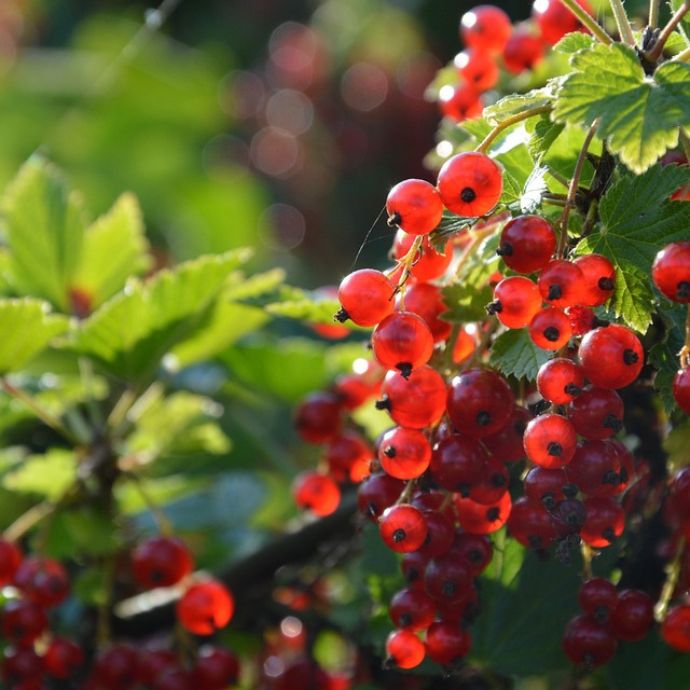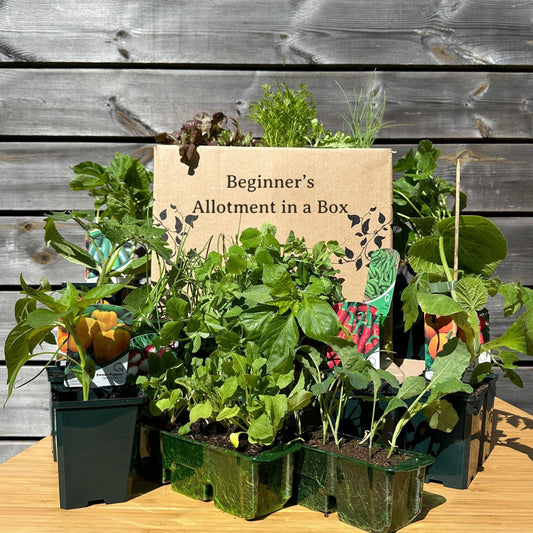Growing Vegetables in Pots for Beginners
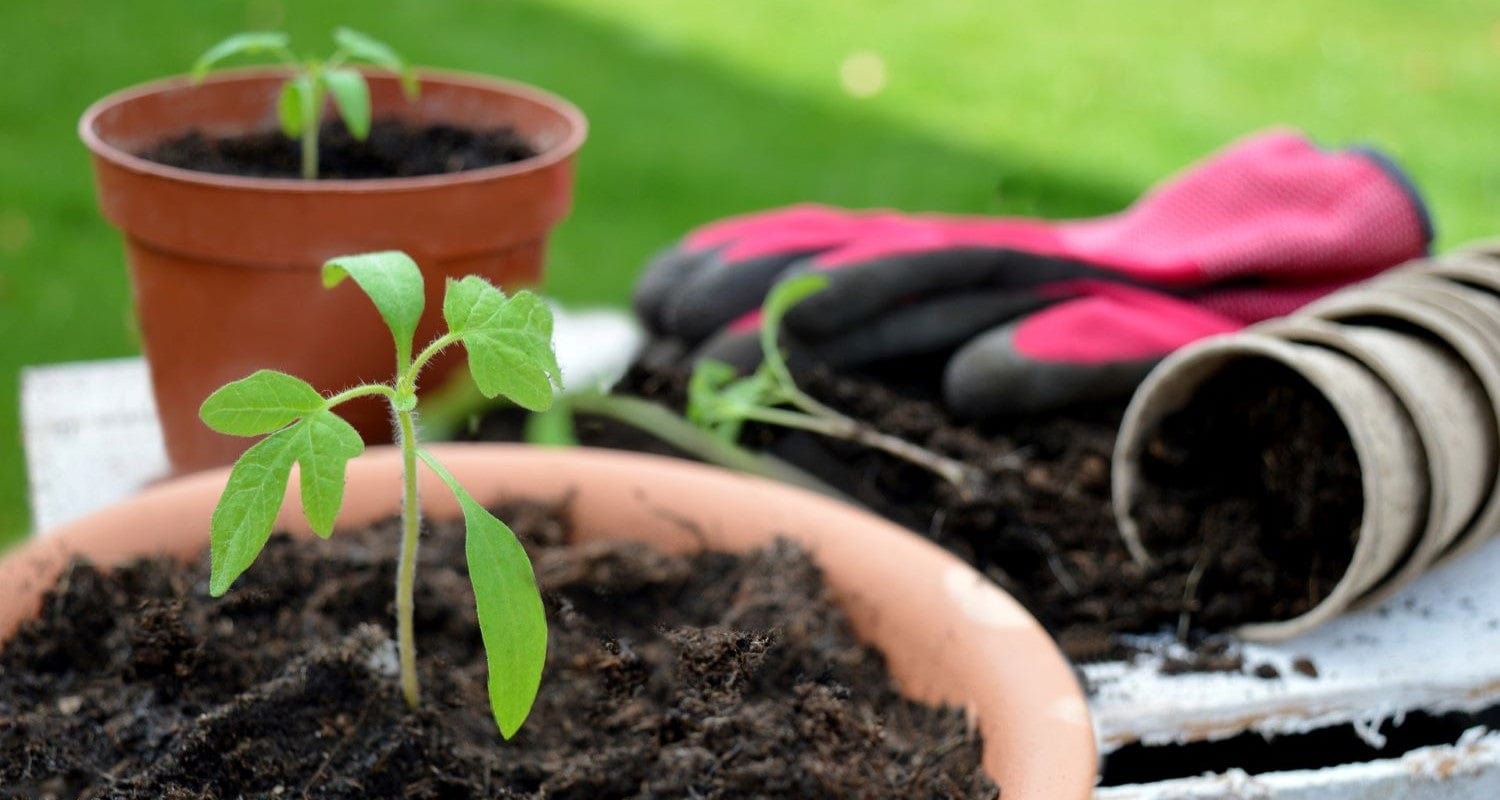
Growing vegetables in pots is great for those of us who haven’t got space for a veg patch (or even a garden) but there are so many more good reasons to grow vegetables this way.
Jump to:
- Why grow in pots?
- Best veg for pots
- Best type of pots
- How to plant veg in pots
- Caring for veg in pots
Why grow vegetables in pots?
Pots are portable
Planted something in the wrong place and it’s getting no sun? Easy - just pick it up and move it. Tender plants that don’t like the frost? You can bring them indoors, no expensive cloches or cold frames needed. And if your plant grows too big, you can just transfer it to a bigger pot.
Pots can move house with you
When you’re renting and your landlord wants his ‘low maintenance’ gravel garden left intact, just get a bunch of pots and put them on top of it until you leave. Why should the landlord get the benefit of your hard work? He’ll probably keep your deposit, don’t let him keep your kale too!
Pots are easier (generally)
It’s a lot easier to keep control of your planting if you use pots. You don’t have to worry about pests so much and you know the soil is good because it’s compost. There is one downside - you’ll have to water your plants more.
Pots are more accessible
If you can’t do gardening at ground level, you can plant in pots and position them at a height that’s right for you. There’s no digging needed and they’re easier to harvest too.
Pots look cool
You can make your veg pots into a design feature - pick terracotta and blue glazed pots of different sizes for a mediterranean balcony, cuboid containers in white, grey and black for a contemporary patio or best of all, your own selection of reclaimed and upcycled containers - get creative!
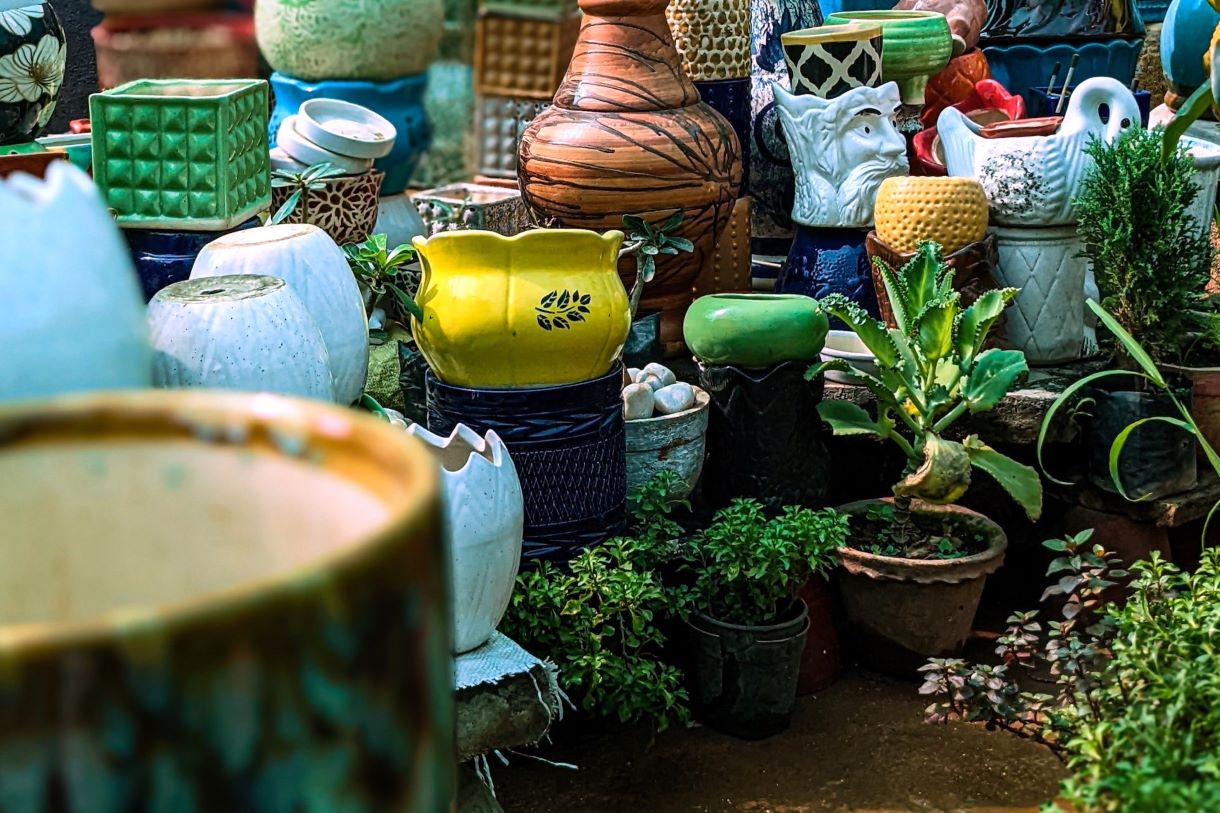
The best vegetables to grow in pots
Many - but not all - vegetables can be grown in pots. Notable exceptions include pumpkins and squashes (too sprawling), sweetcorn (too tall) and most root veg (too deep). For the best results, choose dwarf varieties or those recommended for containers - there are lots available!
These are the easiest veg to grow in pots:
Tomatoes
The key to growing tomatoes in pots is to choose a compact bush tomato or tumbling tomato and avoid cordon varieties that will grow too big. Each plant will need a 30cm pot or to be spaced 35cm apart in a grow bag or planter - you can even use a hanging basket for tumbling varieties! Reserve the brightest part of your garden for your tomato plants - they need a lot of sun to produce fruit.
We recommend: 'Tumbling Tom Red' Tomato Plants and Organic 'Tiny Tim' Tomato Plants.
Peppers
Pepper plants are ideal for growing in pots - they also need a lot of sun, so a windowsill, conservatory or greenhouse is ideal but you can also move them out to a sunny patio in summer. Use a pot that’s at least 20-25cm deep and wide, avoiding terracotta as it tends to dry out in hot weather and peppers need consistently moist soil.
We recommend: 'New Ace' Red Sweet Pepper Plants and 'Yellow Bell' Sweet Pepper Plants.
Spinach and kale
The shallow roots and compact growth of leafy greens like spinach and kale make them a winner in pots. Pick what you need fresh from the plant and it will produce more. Make sure you check the plants regularly for slugs and snails, as we’re not the only kale-loving species around…
We recommend: 'Perpetual' Spinach Plants and 'Reflex F1' Curly Kale Plants.
Peas and beans
Peas and beans are so easy to grow, producing a large volume of crops over a long period in the summer. There are plenty of dwarf varieties available now which are just as productive as their leggy cousins, but it’s not hard to build an appropriate support network in a pot (see below) for taller plants. You’ll also get the bonus of colourful blossom with these plants!
We recommend: 'Tendergreen' Dwarf French Green Bean Plants and 'Tom Thumb' Pea Plants.
Salad leaves
Keep a few lettuces in pots on your patio or balcony and you’ll never find a bag of soggy salad at the bottom of your fridge again. Just pick what you need each day and the plants will produce more. Watch out for slugs and snails - you can cover your plants with a cloche at night or line the pot with copper tape to defeat them.
We recommend: Mixed Baby Leaf Lettuce Plants and 'Red Salad Bowl' Lettuce Plants.
Chillies
Like peppers, chillies are an easy win for a windowsill or conservatory. They take up very little space and produce large crops which can be used in a multitude of spicy dishes, pickled, dried or made into hot sauce. Even better, you can pick them at any stage once they’re full size. Green chillies are milder, getting hotter as they ripen through yellow, red or orange.
We recommend: 'Apache' Chilli Pepper Plants and Habanero Paper Lantern' Chilli Pepper Plants.
Spring onions
Although we wouldn’t recommend growing regular onions in pots (they need too much depth) spring onions are pretty simple, grow quickly and are hugely versatile. Plant them in rows in a rectangular planter or in pots roughly 7cm apart. Watch out for bolting (developing flowers) in hot weather, and snip off any flower stems as they appear - you want the plants to put their energy into growing nice big bulbs instead!
Potatoes
Growing potatoes in a bucket or a sack is simple - just plant your seed potatoes on top of around 8-10cm of compost, cover them with more (if you’re feeling really low maintenance, you can even plant them straight into a bag of compost with a few holes in the bottom) and keep adding more compost or soil as the plants grow. When the leaves start to look dead, that’s when you can harvest your crop, and this is the fun part. Just tip the bag over, pick out all the potatoes then reuse the soil by mixing it into your flower beds.
We recommend: Seed Potato Starter Pack and Gourmet Seed Potato Pack.
Carrots
Really? Don’t they need deep soil? Hear me out - if you choose carefully you can produce an excellent carrot crop in a pot - I tried it last year and was very pleasantly surprised. Chantennay carrots are perfect for this, being naturally short in form. Make sure you space them well in their pots and use a compost with plenty of sand mixed in, as if the soil is packed too tightly the carrots won’t form properly.
Herbs
Herbs are perfect for growing in pots, especially compact, sun loving annuals like basil and coriander. Grow your herbs within easy reach of the kitchen door to make them easier to harvest when you need them. You can use pots of different sizes, window boxes and hanging baskets to create an edible garden which will also give fragrance and visual appeal to your seating area. Vigorous herbs like rosemary and mint are best planted in pots as they tend to take over borders!
We recommend: Mediterranean Herb Plants Collection and Indoor Herb Plants Collection.
We’ve made it even easier by putting all of our best veg for pots into one collection.
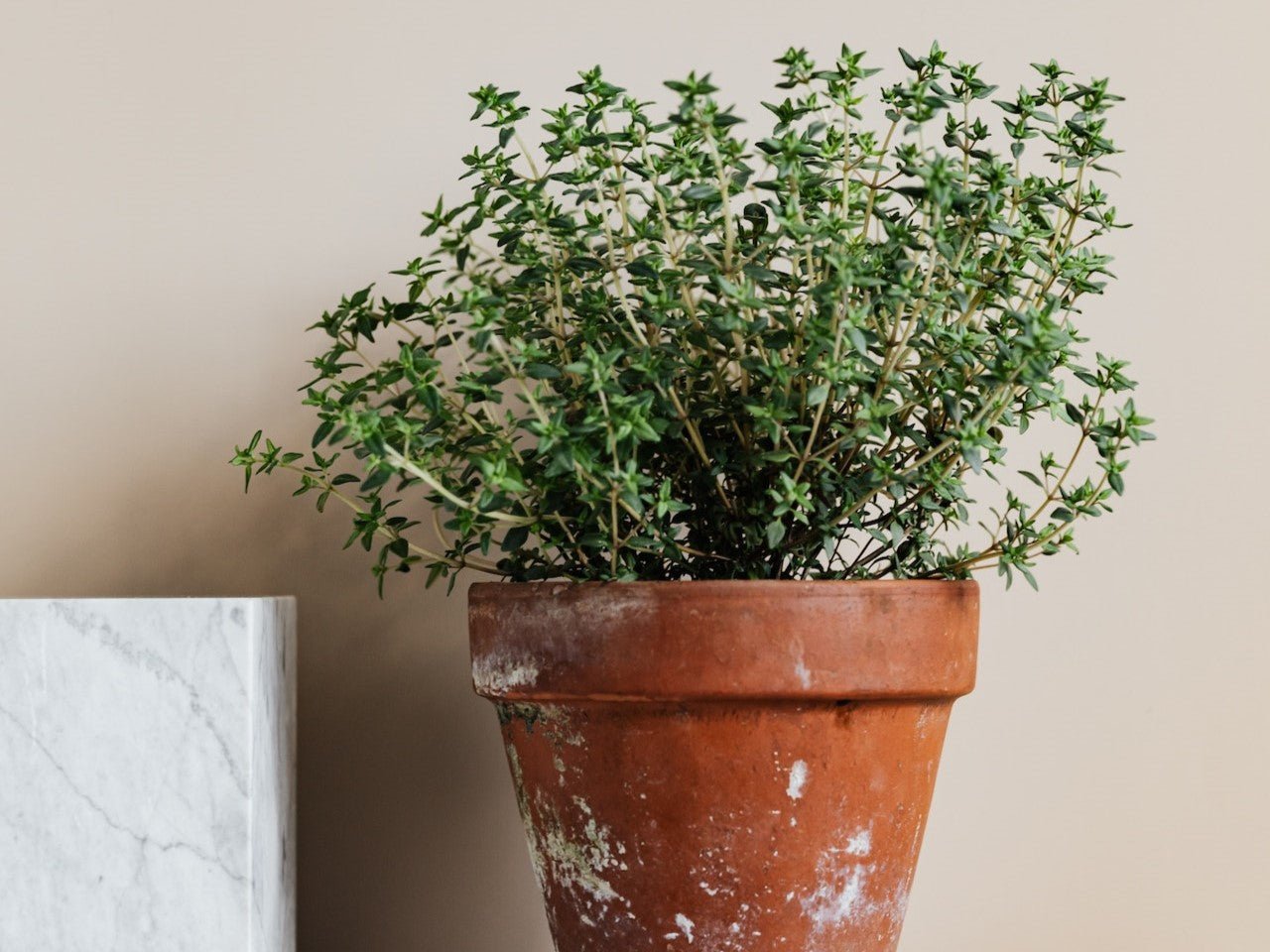
The best pots to use
Any pot is good for growing vegetables as long as it is large enough (30cm deep and wide is a good size) and has holes in the bottom for drainage. To improve the drainage, you can also add gravel or pieces of broken crockery to the bottom of the pot. A grow bag or compost bag with holes cut in the bottom is a good low-budget alternative!
How to plant vegetables in pots
If growing from seed, start your plants off indoors in a propagator or small pots on the windowsill, then gradually acclimatise them to the lower temperatures outside by ‘hardening off’ for a couple of hours a day then bringing them back indoors. Plant them out into their final positions when they’re big enough. Alternatively you can skip all this and use plug plants. Depending on their size, these can be planted straight outside or grown on in a pot until they’re big enough. Always wait until after the last predicted frost - it varies according to which part of the UK you’re in - and use compost for the best results as it’s higher in nutrients than garden soil. It’s also a good idea to add a mulch - a layer of wood chip, pebbles or similar - at the top of the pot as this will keep moisture in your soil as well as keeping weeds away.
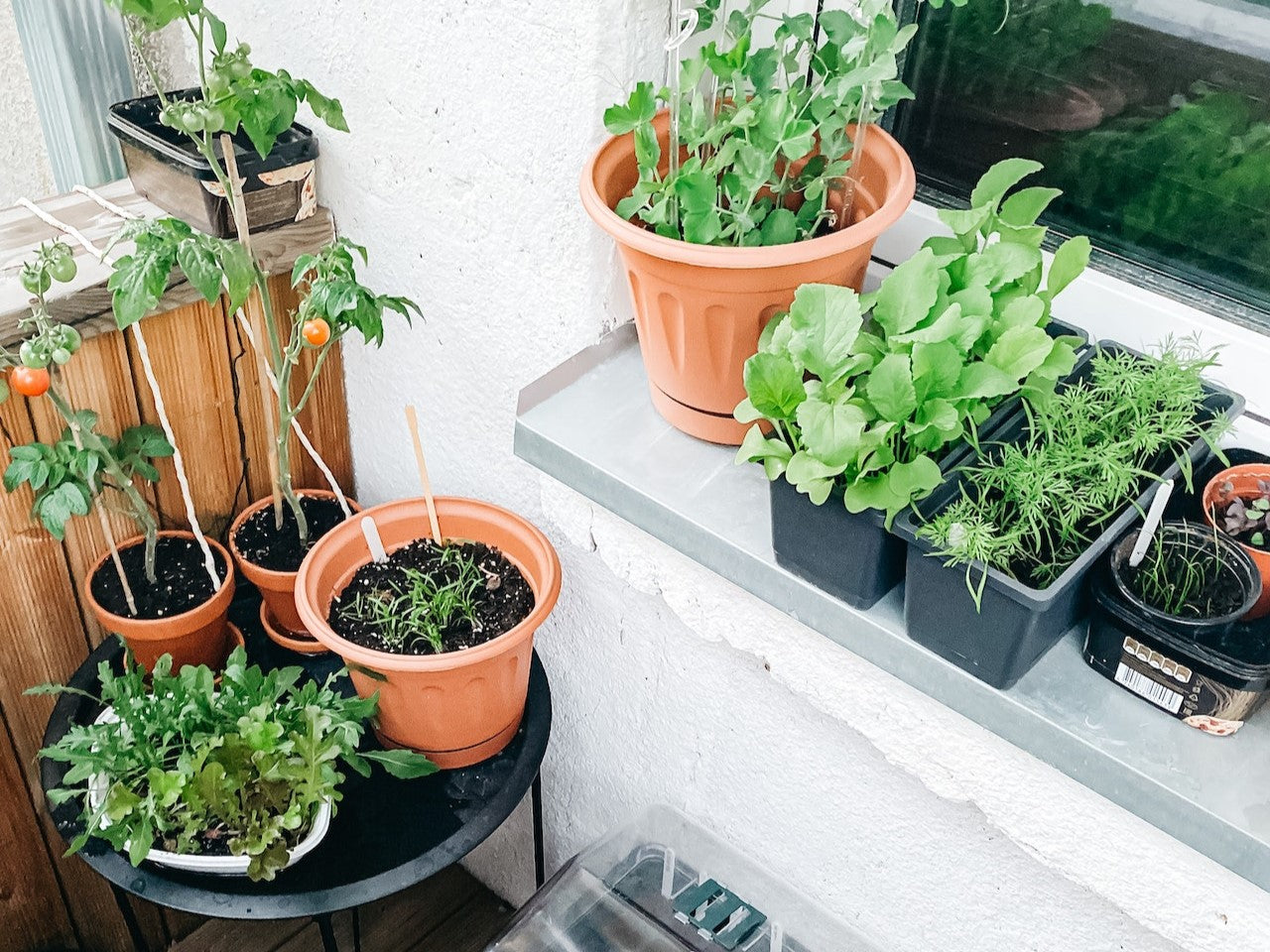
Caring for vegetables in pots
Feeding
You’ll get much better results from your vegetable plants if you feed them - for most plants this can be as simple as mixing in some general purpose fertiliser with the planting soil. Fruiting plants like tomatoes, peppers and chillies need a regular potassium feed once they start flowering - you can use tomato feed on all of these plus peas and beans, while leafy veg like spinach, salad and kale will benefit more from a seaweed solution. For a thrifty and organic option, why not make your own feed?
Watering
The one downside of growing in pots is that you’ll need to water your plants more often, especially in hot, dry weather. Check them every day and give them a good watering (preferably with collected rainwater) if the soil feels dry.
Support
Some vegetable plants need a bit of extra support, including peas, beans, peppers and chillies.
Although you can get some varieties now which don’t, such as Tendergreen climbing beans.
Bamboo canes or plant sticks are good for taller plants, but make sure you use a soft tie such as a pipe cleaner or piece of fabric to tie it to the plant stem. You can make your plant supports into a design feature by positioning three or four tall sticks in your pot, tying them at the top to form a pyramid and weaving string between them in a criss-cross pattern - ideal for peas and beans, and looks great on the patio!
Pests and diseases
Vegetables in pots are much less prone to diseases such as moulds and mildews because they’re in a self-contained environment where overcrowding and airflow isn’t so much of an issue. If you’re growing indoors, however, do keep an eye out for aphids and whitefly, which can thrive in warm, humid conditions. If you see any, wipe them off with a damp cloth and spray your plant with a homemade pest control spray. Pots outdoors may be targeted by slugs and snails but it’s easier to control them here than in open ground - just stick some copper tape around the rim of the pot or make a barrier of crushed eggshells or gravel around the base of the plant.
Last updated: 15/11/2023







